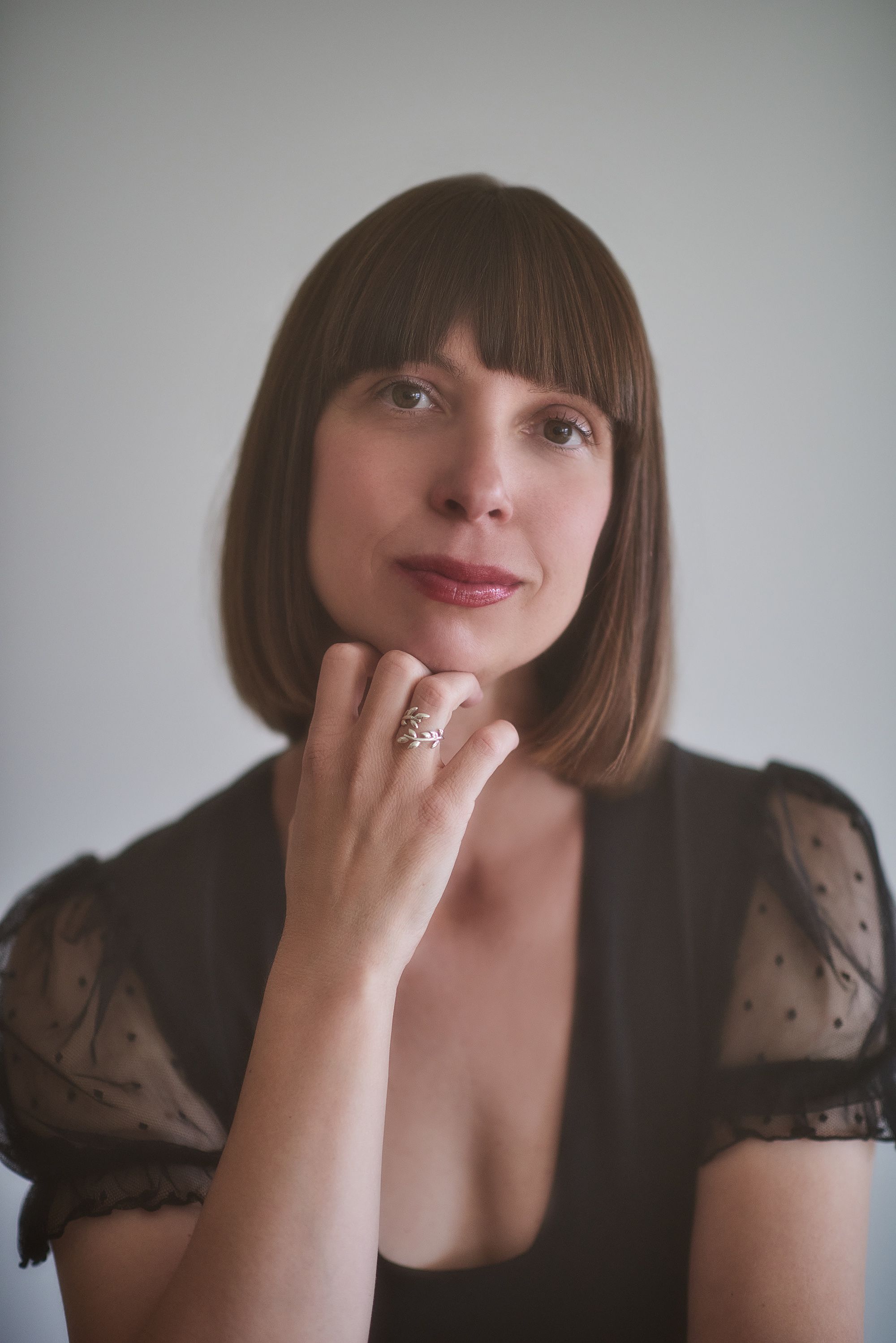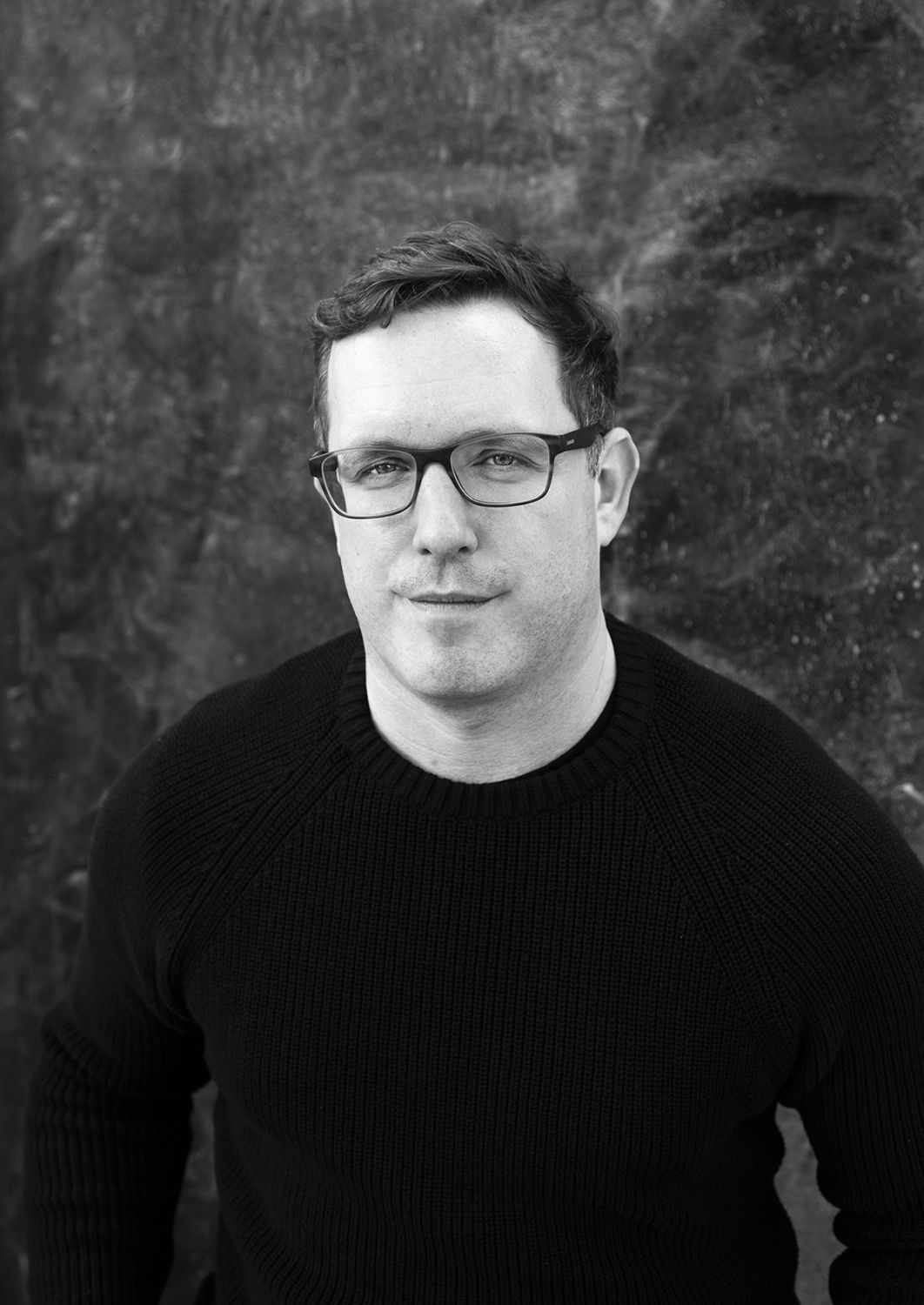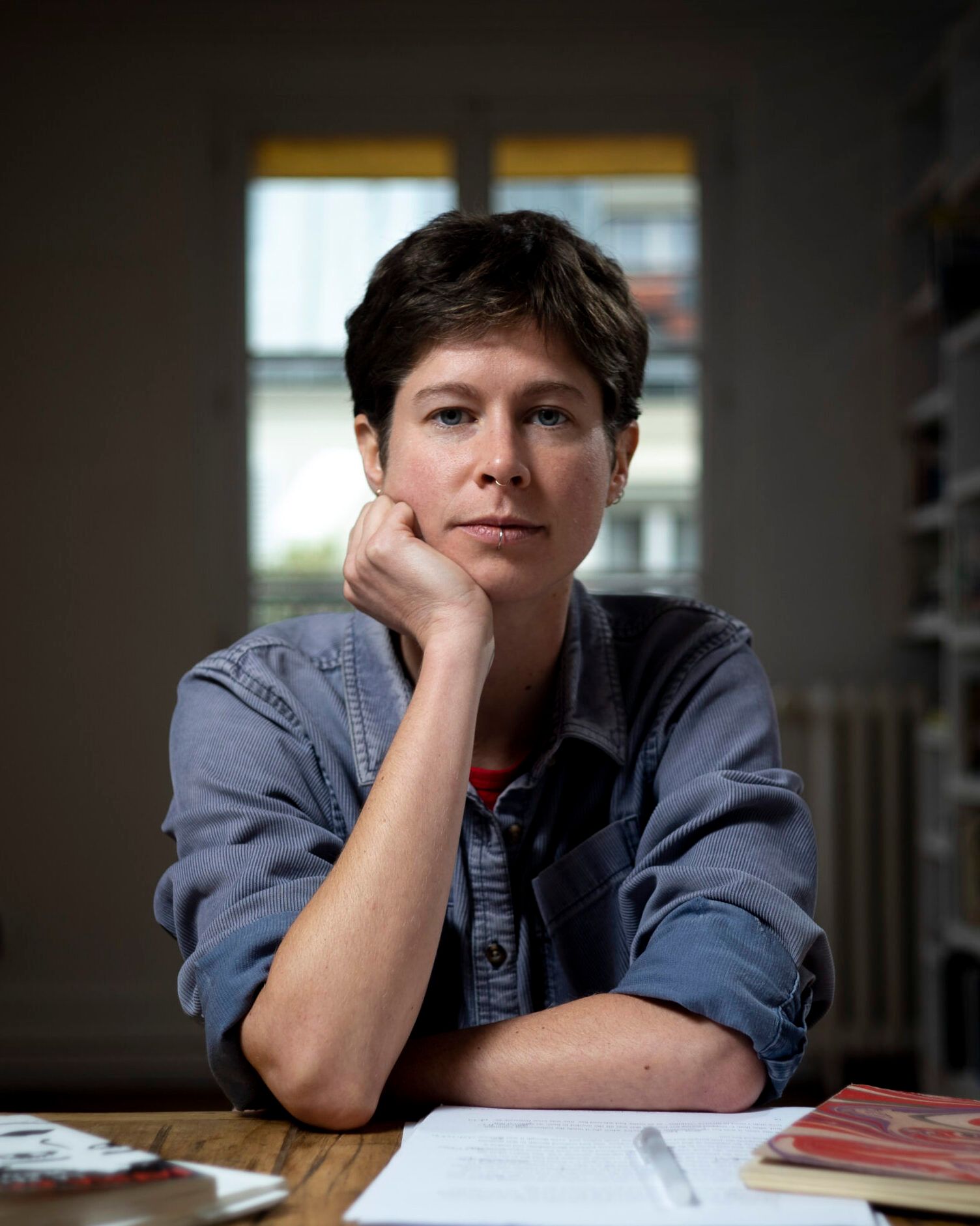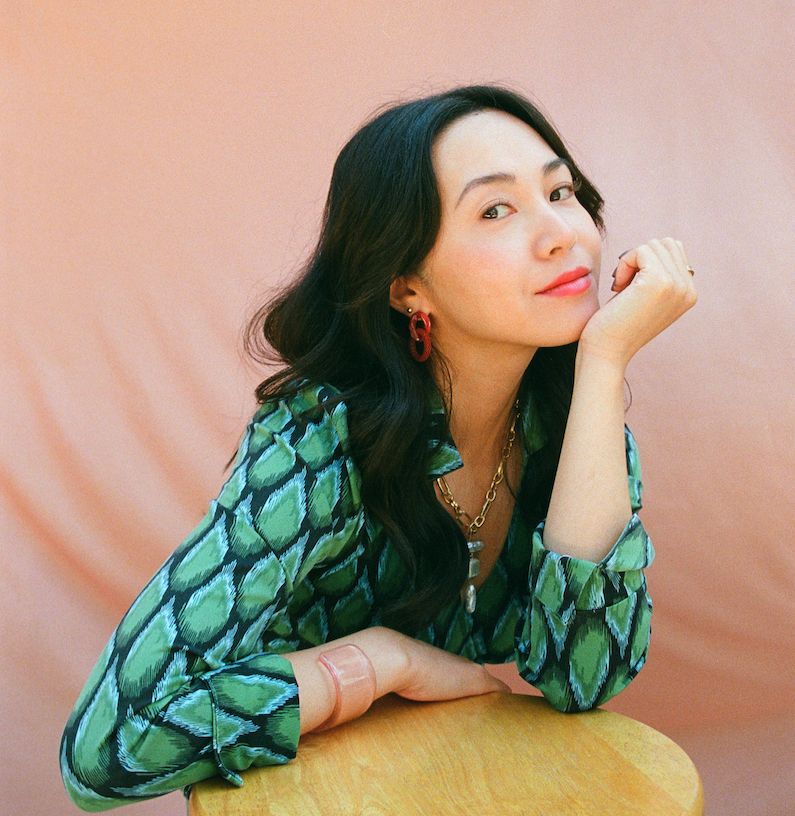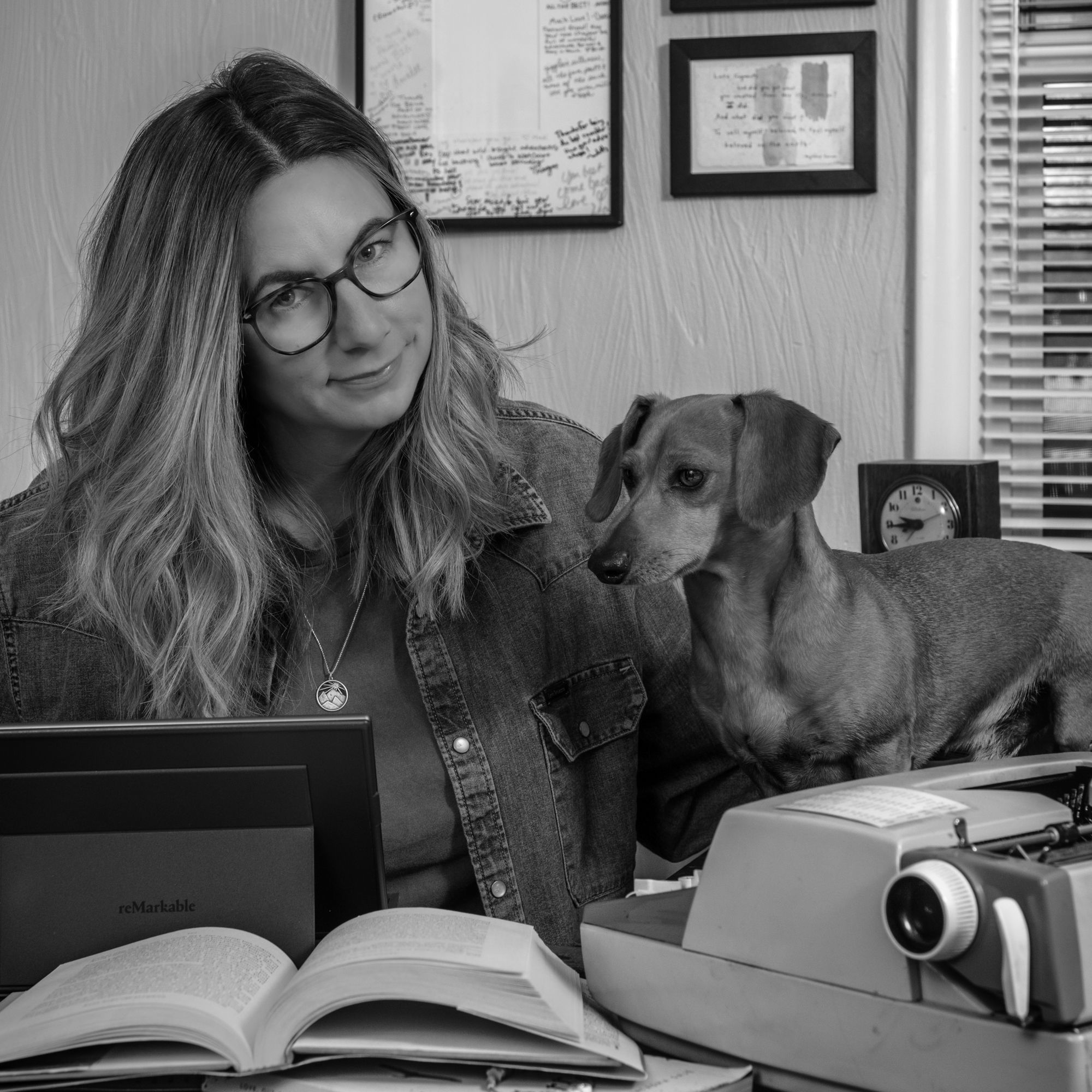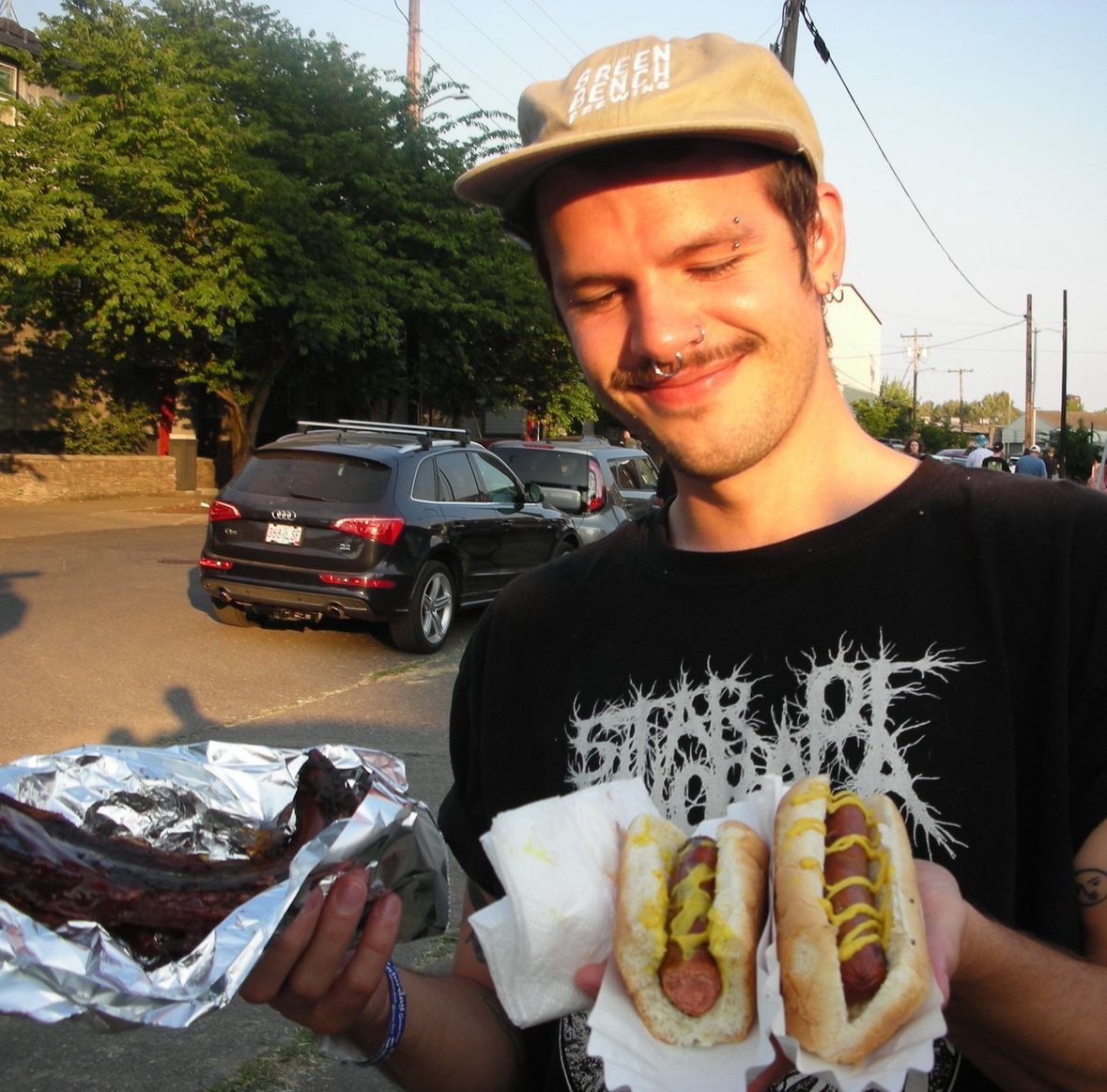Montserrat Andrée Carty: This book felt so collaborative. You often bring in your translators, many other writers, and of course, your sister Cori Nakamura Lin’s beautiful artwork is peppered throughout the pages. Did you know at the onset that you would be working with other people to bring this book to life? Was that important to you from the beginning?
Jami Nakamura Lin: There are so many different places that I could point to as the “beginning” of The Night Parade’s process. From the time I was quite young, I kept detailed journals and knew I wanted to write a memoir— that could be a beginning. When I was seventeen, I wrote a sort of brief book proposal of what I wanted my memoir to be. During my MFA, in 2011-2013, when I was in my early twenties, my thesis was about my experience with bipolar disorder. Those versions of my book all were very tightly focused on me, on my story, with little collaboration (although Cori did draw the cover to my MFA thesis!).
But I got really sick of writing about myself and disliked what I’d written. So I set all that aside for years while focusing on fiction and folklore instead. In 2020, after my father died, I started what would eventually become The Night Parade. That version was more community-driven from the beginning—I knew I wanted to include so many other stories, so many other writers and legends. When I signed with my agent, I asked if we could include Cori’s yо̄kai art in the proposal. Cori and I have collaborated on other things since we were young—she would illustrate my zines, and so on. So the book was sold with her art as a package.
As I was researching, it became clear to me that so much of the material I was interested in wasn’t translated into English. I wanted to work with translators and researchers that I connected with, who were from the cultures and communities I was writing about. So much of translated folklore is filtered through white male scholars without this lived experience, who had a much more colonialist view towards the work. I was so glad to be able to work with Lisa Hofmann-Kuroda and Jenna Tang. Having all these collaborators gave this project a depth and richness that would have been impossible had I done it myself.
MAC: I love the way you repeatedly let the reader into the process of writing and revising. For instance, in one place you write: “The first time I tried to tell this story I took out all the parts about our family…” I find that when writers do this–bring the reader into the messy process of writing–it makes us trust the writer more. It shows that things don’t just come out perfectly baked–and that the process can be just as poignant as the result itself. I am curious to hear more about your choice to let us into the process?
JNL: I think this did not feel so much like an active choice, but one born out of frustration. I didn’t feel like I could write it any other way. I had no way to make it tidy, other than showing people a backstage tour. But I also think the essays I really love often have this meta-level that reflects on process. I love a good craft book; I love seeing how the sausage is made. So much of the book deals with reckoning with the archive, so it seemed natural that this type of reflection on the process would be included.
MAC: In some parts of the book you move away from first person. As you write:
“I’ve tried to tell this story so many times, but when I use I––when the girl is me––the story sputters in my mouth… I am not telling this story like this to keep you away. I want to invite you in, the only ways I know how. This is what the ghosts know. To get close enough, sometimes you have to pretend you are not you.”
I have absolutely found it to be the case that when I’m dealing with difficult material sometimes the only way to access the emotional truth of it is to go into second or third person. Is there anything else you might want to share about the process of changing the POV to access the emotional material you may not be able to get to otherwise? Or, asked another way, do you find you make fresh discoveries in your writing once you remove the I?
JNL: Yes! Some of the chapters where I switch to 2nd or 3rd person incorporate these pivotal life moments that I’ve told again and again, like the one involving the suicide attempt. Because of this, the story had become somewhat scripted and calcified in my mind. When I turned an early first-person draft of that chapter into my editor, she would point out how these sections weren’t resonant or cohesive, and yet when I tried again, it was so hard to shake myself out of those same narratives. After a couple of flailing versions, my editor suggested writing it in third person, in order to give myself some narrative distance. At that time, I’d already written another chapter in second person. I was delighted by her suggestion—I hadn’t realized I was allowed to do so many different things. But she said to lean into the weird, that reality isn’t my strong suit. And it’s true! I started playing around with tenses and time more, and being able to entertain myself as I was telling these stories helped me to break out of this frozen narrative. It gave these stories this element of play, this freshness. It didn’t feel as painful and as calcified.
MAC: Much of your story in this book is about grief and about illness. And you tell these stories in collaboration with mythology. As a reader, I found this was so impactful and I am curious what that was like for you as the writer. I wondered if, similar to changing the I to She, if bringing in myths as a framework helped you to write more deeply about these difficult topics?
JNL: Using folklore and mythology gave me a foil—something to push back against when writing about one thing became too overwhelming (or too boring—I have ADHD, and get distracted easily, and it was helpful to have different things to focus on!). I also think it’s helpful for the reader to have a breath between more intense moments, like when my father is dying. Sometimes the camera has to look away for a second before it can return.
I also love how myth can function not only as content but as metaphor, adding a layer of resonance—the folklore stories and my personal stories each enrich the other. They have a conversation.
MAC: As much as this book is about grief it is also, very much, about identity. Specifically, about cultural identity you write: “I learned identity could shift––could, in some ways, be chosen.” This really struck a chord and I’m sure it will resonate with many others as well. I would love to hear you speak more about identity shifting–on claiming–or re-claiming the identities that resonate?
JNL: I think this is salient to me because of being Taiwanese and Okinawan in addition to Japanese. Both of those identities are so political. When you’re in diaspora, it’s in some ways a choice as to whether to identify as Taiwanese vs. Chinese, and as Okinawan vs. Japanese. Both Taiwan and Okinawa are claimed by those larger countries. And in America, when people know so little of Asia to begin with—much less all our complex geopolitical maneuvers and histories of imperialism—it can just seem so easy to say the less complicated thing. We know people who say Chinese American instead of Taiwanese American because it’s simpler.
As I said in the book, my dad’s family is ethnically Han Chinese; we moved to Taiwan in the 1700s. We only started identifying as Taiwanese when I was an older child, when his mother became more politically involved in the independence movement. Similarly, much of grandma’s Okinawan American family identifies as Japanese, even though we are ethnically Okinawan, and it’s a separate culture and language. In diaspora, these distinctions can get flattened—sometimes by other people, sometimes by ourselves. These decisions can be very fraught! And can continually transform and change. My feelings about Okinawan identity have evolved a lot lately and, I assume, will continue to evolve. I think identity is not always this static thing; it happens in relationship to community and context, proximity, and politics.
MAC: You write so powerfully about mental illness, and I especially appreciate your resistance to tying up the narrative with a lovely bow. We need more of these narratives of what it truly feels like to live with a chronic mental illness.
I noticed in the acknowledgments, you make sure to thank your therapist(s) which made me smile. Have you found a link between the writing process and therapy? I ask because some of my best–or most urgent– writing happens after a good therapy session, and I wonder if that’s also been true for you!
JNL: My therapist definitely helped me to think through some of the topics in this book. In a couple of my essays, I talk about conversations my therapist and I have. For me, a lot of the thinking work, the figuring out of connective tissue, happens in therapy or afterwards. But the writing work—the crafting of these ideas into art—I think of as separate. The seeds of what I write about can happen in therapy, but the work of shaping and refining a narrative happens outside of it.
But I definitely could not do any of this—especially the publishing process!—without my therapist. At one point this year I was going to four different kinds of therapy. And so in that way I find writing to be therapeutic sometimes, but I do sometimes feel resentful towards people who lump all illness-related writing together into a sort of artless confession. As if there’s no art or nuance in it, as if we’re all just spitting emotions onto the page. For me, at least, the crafting and shaping of the work was so, so much harder than just getting the content written!

